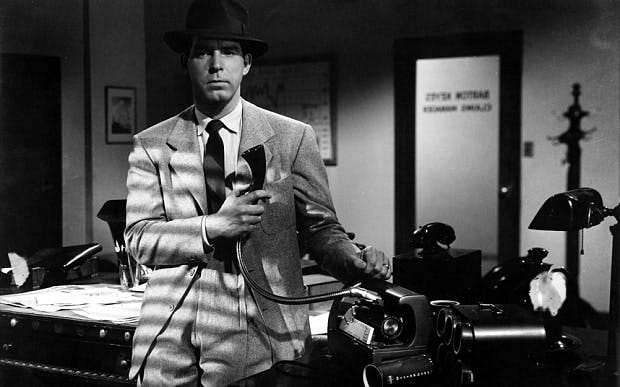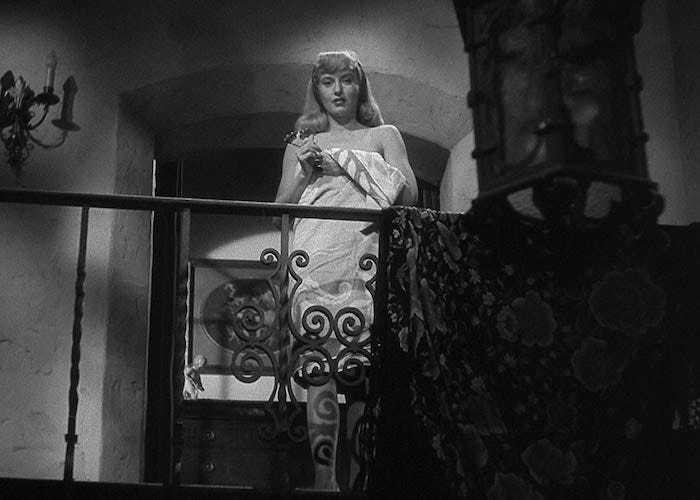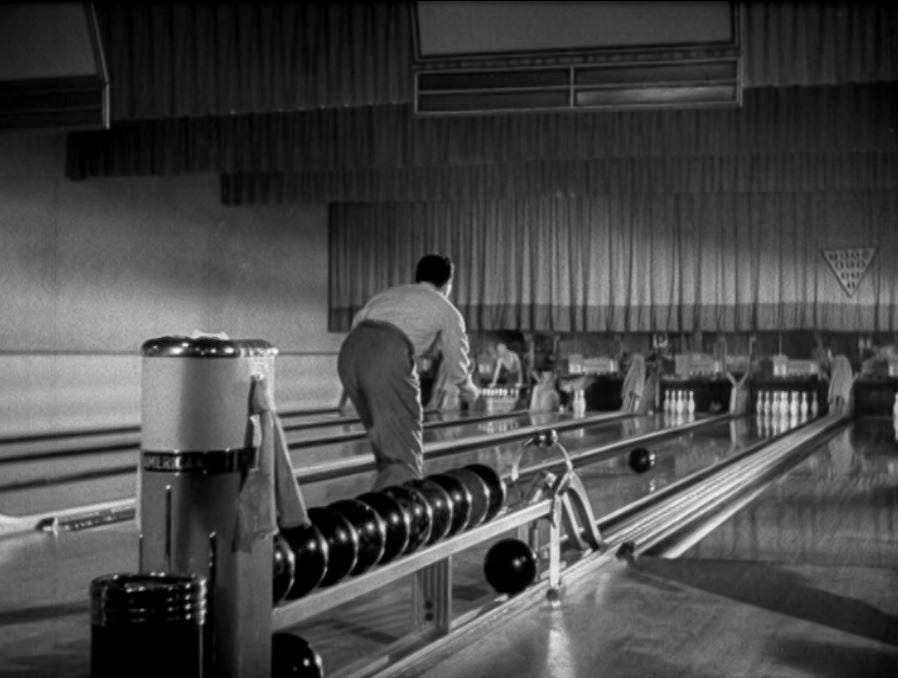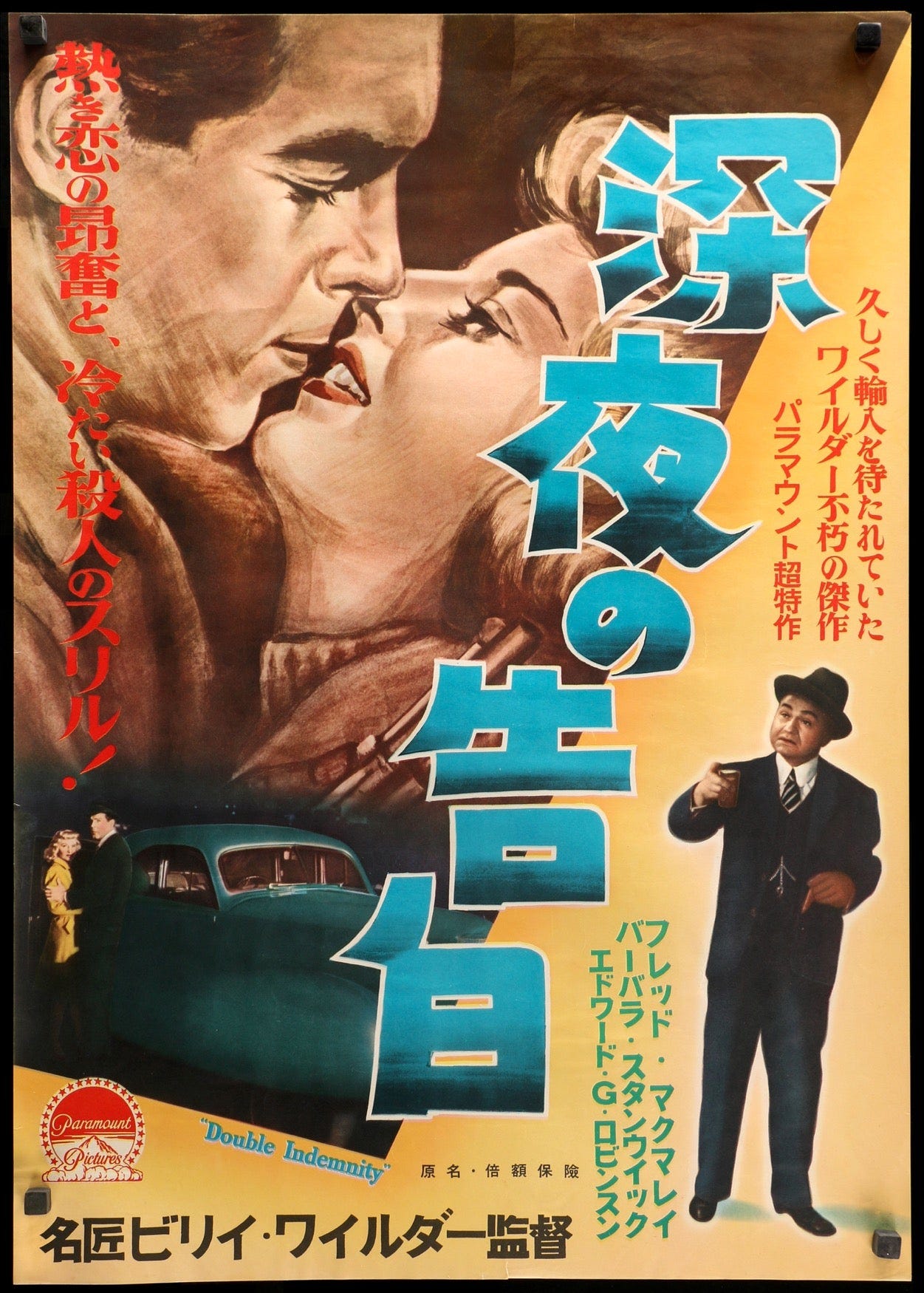Plot: A Los Angeles insurance representative lets an alluring housewife seduce him into a scheme of insurance fraud and murder that arouses the suspicion of his colleague, an insurance investigator.
Directed by: Billy Wilder
Written by: Billy Wilder and Raymond Chandler (based on the novel by James M. Cain)
Cinematography by: John Seitz
Studio: Paramount Pictures
Runtime: 1 hour 47 minutes
It’s daunting to write about THE film noir. I mean, what can I say or highlight that hasn’t been said already. In the views of Film Noir Foundation’s and TCM’s Eddie Mueller, Double Indemnity is the essential noir; the one that started it all. I think we’d be hard pressed to argue that.
I watched this film a couple of weeks ago because some friends wanted to watch A Haunting in Venice, Kenneth Branagh’s third Hercule Poirot adaptation. I had already seen it, so I suggested we watch something for Noirvember. “What is Noirvember?” they asked. I said it’s a month dedicated to watching film noir. “What is film noir?” they asked. So I took it upon myself to provide some historical and contextual information. I could see their eyes glazing over as I tried to best sum up the essence of film noir. I figured they were visual learners and thought showing them an example would be best. I gave them three options to pick from: Double Indemnity, The Killers, and Out of the Past. In my mind, these are examples that exemplify the best qualities of the genre. They chose wisely with Double Indemnity.
I remember the first time I saw Double Indemnity. I was a student at the University of Utah and took a course on the history of film from 1900-1950. We watched films like 42nd Street, Stagecoach, and we even had a local organist come in to accompany a print of F. W. Murnau’s Sunrise. I can still hear the refrain the organist whipped up. We met in a now demolished building called OSH, in a giant, dark auditorium. Anyway, as part of the course, we naturally spent a week on film noir. The film we watched to exemplify the movement was Double Indemnity. And rightfully so.
Double Indemnity cast a spell on me with my first viewing. I had watched The Maltese Falcon and The Big Sleep (thanks dad for introducing me to those), but I had never seen a film noir like Double Indemnity. This one had less gun play and fewer gumshoes. I remember so much standing out to me at the time that I knew I had to watch it again. And I did. At first, I rented it from the library. After my second viewing, I knew it was true love and I purchased the DVD from Best Buy. I remember a few things standing out to me from those early viewings.
Double Indemnity has one of my favorite features of a film noir: we more-or-less know how it ends right from the beginning. The film starts with a voice-over narration provided by Walter Neff. From the beginning, we are aware of his guilt. He states that he does not get the money or the girl. He hints at his fate throughout the film, claiming that he could not hear his own footsteps, but the “footsteps of a dead man.” And yet, even though we know where it’s headed, we can’t help but watch.
Visually, the film is a masterpiece. I remember my professor encouraging us to look out for the Venetian blinds in the film. They are present in numerous scenes play a large symbolic role. Multiple times, Neff is standing in a room with a large window that has light shining through it. The angle of the light spreads the shadows of the blinds across his upper body, symbolizing the “prison” in which he has entrapped himself. College Elliot thought it could not get any better than that.
I also remember being fascinated with the character of Walter Neff. He is not a private eye or a hard boiled detective. He is something much more boring: an insurance agent. Walter is a sharp dressed, well-groomed man. His shirt is always tucked in, his tie is always fastened. He is also respected at his place of work. In fact, Barton Keyes, his friend and boss, offers him a promotion, which he declines. Walter is admired by his peers and thought of as a genuinely good guy. On top of that, an insurance agent is entrusted with taking care of the lives, money, and property of people. It is also his job to see that the welfare of his employer is protected. Yet, he is the catalyst for much of the plot since his profession makes much of it possible. He betrays his calling. This is what makes him a great character in a film noir: a good citizen who slowly walks down a path of destruction, both his own and others.
Of course, Walter is not alone. He did not conceive of an evil plan all on his own. Phyllis Dietrich, played by one of the best actresses to ever grace the screen, is more than happy to tempt Walter into a life of illicit activity. Barbara Stanwyck sizzles on screen as one of the great femme fatales of noir. She puts on a masterclass of how to get people to do what she wants. James, the buddy I was watching it with, made a great observation: “She is stoic and sinister…she’s a black widow.” I couldn’t have said it better myself, James.
She makes quite the entrance atop the stairs in her Los Angeles, adorned in nothing but a towel and her anklet. Walter can’t take his eyes off her (neither can the audience). They have a coded, playful discussion about insurance and speeding tickets—Walter wants to make sure he isn’t going too fast. It’s not too long before Phyllis plants the idea that she is helpless. She shows up at Walter’s apartment and tells him of how much she loathes and hates her husband; how when he gets drunk he hits her. “You do believe me, don’t you Walter?” she asks with desperation. Phyllis charms Neff into believing that he is the answer to her prayers. This opens a door for Neff to come in with his insurance expertise and assure her that there is a better way to get rid of her husband then killing him in the garage.
Walter comforts her and holds her in his arms. I remember my college professor pointing out this scene The next camera shot shows Walter on his couch, smoking a cigarette, with his tie undone. Phyllis looks a bit untidy as well, as she is reapplying her lipstick. They sit there in silence as Walter continues to puff away at his cigarette. The untidiness of the characters, the cigarette, and the silence imply that Walter and Phyllis had sex. Yet it is so subtle. After Phyllis leaves, Walter walks back into the living room and straightens out the rug, as was not laying down straight, rather sticking up in the air. The rug having been moved around is more evidence that these two criminals had a sexual encounter. Yet, nothing was said directly. The strict enforcement of the Hays Code was an opportunity for Billy Wilder to communicate in more subtle ways.
It would be remiss of me to not mention Edward G. Robinson as Barton Keyes. He and his “little man” that lives inside his chest are the moral compass of the film. The friendship between Neff and Keyes is great until Keyes discovers what Neff has been up to. Robinson is dialed in. He gives one of the best performances of his career. In case you need a reminder, check out the clip below.
When Neff is dying, he doesn’t get a speech from Keyes at the end, which is strange because Keyes loves giving speeches and explanations. But Neff is washed up; he’s done for. Keyes won’t waste any oxygen on his fallen friend. It’s sad to see him realize how much he did not know his best friend.
There are two short scenes that I want to point out. The first is when Neff bowls. He is approached my Phyllis to go in on the crime…and I guess he needs to think about it? So he goes bowling. Film noir author Wes Clark wrote some brief observations on bowling in film noir (check them out here). Of Double Indemnity, he writes:
Even potential killers need a break from the psychological pressure of their noir schemes. Walter Neff, concerned about hints from Phyllis Dietrichson that she'd like to see her middle-aged husband involved in a fatal accident, unwinds at the local bowling alley, informing the viewer that "I didn't want to go back to the office, so I dropped by a bowling alley at Third and Western and rolled a few lines. Get my mind thinking about something else for a while." Bowling doesn't help Walter get the beautiful Mrs. Dietrichson off his mind, as evidenced by his 2-10 split.
What was bowling to Neff? Did he just need to mull things over? Was he a good bowler? Is bowling the therapeutic release that we all need? I love that there’s a sub-genre of film noir where bowling plays a role in some way.
The other scene is where Neff and Phyllis are talking outside and in the background, you can see the Hollywood Bowl while an orchestral concert is going on. It is Shcubert’s Symphony #8, “The Unfinished.” My buddy James, with whom I was watching the movie, is a classical music aficionado. So he took it upon himself to investigate why this particular piece was being played during this scene. He followed up about 22 hours later with the results of his own detective work. He found some discussions where some viewers have mythologized that “The Unfinished” was selected for its dark tone and incomplete status as a metaphor for doomed love. I like that explanation a lot, so I’m sticking with it.
Double Indemnity was a big success upon its release. Some films noir take some time to get some traction and appreciation. But not Wilder’s masterpiece. It was nominated for seven Academy Awards: Best Picture (lost to Going My Way), Best Director, Best Actress, Best Screenplay, Best Cinematography (B&W), Best Music and Best Sound Recording. Awards are nice and all, but when was the last time you heard anyone talk about Going My Way? Double Indemnity’s impact on culture and audiences and stood the test of time. It was made for $980,000 and grossed over $5 million. So there’s that, too.
I could go on, writing about more favorite scenes or snippets of dialogue. And it would not be entertaining or interesting. There is no shortage of Double Indemnity praise in print and online. But if this writing has sparked any kind of interest in the film, I heavily recommend you check it out as soon as you can. Even if you’ve seen it before, it’s dark world holds more to uncover for you. See you at the end of the line.
Favorite line:
Walter Neff: Yes, I killed him. I killed him for money - and a woman - and I didn't get the money and I didn't get the woman. Pretty, isn't it?
Smoking: 🚬 🚬 🚬 🚬 out of 🚬 🚬 🚬 🚬
Fedoras: 🕵️ 🕵️ out of 🕵️ 🕵️
Femme Fatale: 💃 💃 💃 💃 out of 💃 💃 💃 💃
Trivia:
James M. Cain based his novella on a 1927 murder perpetrated by a married Queens, New York woman and her lover whose trial he attended whilst working as a journalist in New York. In that crime, Ruth Snyder persuaded her boyfriend, Judd Gray, to kill her husband Albert after having him take out a big insurance policy - with a double-indemnity clause. The murderers were quickly identified, arrested and convicted. The front page photo of Snyder's execution in the electric chair at Sing Sing - taken secretly with a hidden camera - has been called the most famous news photo of the 1920s.
Dick Powell wanted the role of Walter Neff, but he was under contract to another studio and they wouldn't allow it. He was enraged and tore up his contract. The role went to Fred MacMurray.
Billy Wilder originally filmed an ending where Keyes watches Walter Neff go to the gas chamber.
In the scene where Phyllis is listening at Neffs's door as he talks with Keyes: As Keyes exits into the hallway and Phyllis hides behind the door, the door opens into the hallway which isn't allowed by building codes even back then, but it does give Phyllis something to hide behind and increases the tension.
Links of interest:
Here is a link to purchase the DVD/Blu-Ray
Here’s Eddie Mueller on Double Indemnity
A list of the Ten Best Stoner Noirs
And here’s a list of 25 detective noir films that embrace humor.









Everyone complains about the Hays code when it was the best thing that could happen to the industry. It forced directors and writers to think outside the box. It forced them to be subtle.